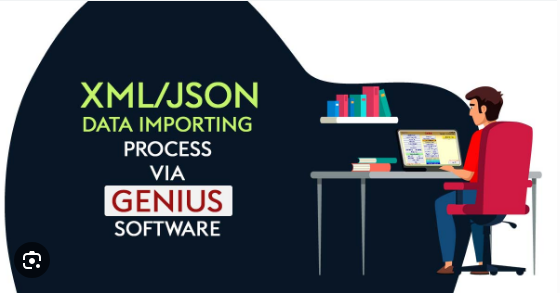In the realm of maritime navigation and tracking, AIS—or Automatic Identification System—is a cornerstone technology that supports safety, efficiency, and transparency at sea. As with any data-driven system, the ability to efficiently encode, transmit, and interpret information is vital. Enter AIS JSON, a modern and flexible way of handling AIS data using the widely adopted JSON format. This article dives deep into what AIS JSON is, why it matters, how it works, and where it’s used.
Understanding AIS: A Brief Overview
Before diving into AIS JSON specifically, it’s important to grasp the fundamentals of AIS. The Automatic Identification what is ais json System is an automated tracking system used on ships and by vessel traffic services (VTS). It provides information such as:
- Vessel identity
- Position (latitude and longitude)
- Course and speed
- Destination and estimated time of arrival (ETA)
- Vessel type and dimensions
AIS was initially mandated by the International Maritime Organization (IMO) to enhance maritime safety. It operates by exchanging real-time data via VHF radio frequencies, allowing ships to “see” each other and helping prevent collisions. It also aids in port management, maritime traffic control, and search-and-rescue operations.
Traditional AIS Data Format
Originally, AIS messages were transmitted using a binary format standardized by the International Telecommunication Union (ITU). These messages, encoded using the NMEA 0183 standard, are compact but not human-readable. For example, a raw AIS message might look like thE While efficient for radio transmission, such a format requires decoding and parsing by software before it becomes usable for analysis, visualization, or integration into applications.
Introduction to JSON
JSON (JavaScript Object Notation) is a lightweight data-interchange format that’s easy to read and write for humans, and easy to parse and generate for machines. It has become the standard format for APIs and data interchange on the web due to its simplicity and flexibility.
A basic JSON object looks like this:
By representing AIS data in JSON format, developers and organizations can leverage a wide range of tools and technologies that already support JSON, making maritime data more accessible and interoperable.
What is AIS JSON?
AIS JSON is the representation of AIS messages in JSON format. Instead of sending encoded strings that require extensive parsing, AIS JSON converts the information into a structured, human-readable form. Each AIS message is decoded and then wrapped into a JSON object with named fields.
Example of AIS JSON
Here is what an
This structure allows users to easily understand and manipulate the data using standard programming tools.
Benefits of Using AIS JSON
1. Human Readability
Unlike raw NMEA strings or binary messages, AIS JSON is easy to read and interpret. This makes it ideal for developers, analysts, and data scientists.
2. Ease of Integration
Most modern web services and APIs work seamlessly with JSON. AIS data in JSON format can be easily integrated into dashboards, mapping applications, or data analysis pipelines.
3. Improved Data Portability
JSON is language-independent and supported across all modern programming languages. This improves the portability and reusability of AIS data across different systems and platforms.
4. Enhanced Debugging and Development
With readable key-value pairs, developers can more easily debug applications, test APIs, and develop features without the need for complex decoding libraries.
Common Fields in AIS JSON Messages
Depending on the type of AIS message (position reports, static and voyage-related data, etc.), AIS JSON may include the following fields:
Some JSON schemas may also include data quality flags, navigation status, draught, or special AIS message types like safety-related message
Applications of AIS JSON
AIS JSON is not just a technical convenience—it opens doors to a wide array of applications in maritime and coastal industries. Some of the common use cases include:
Organizations use AIS JSON to build real-time vessel tracking dashboards. With standardized JSON output, developers can easily map ship positions and update them dynamically.
Port authorities and logistics firms use AIS JSON to optimize ship traffic, reduce waiting times, and improve dock scheduling based on incoming vessel ETA and cargo types.
Researchers use AIS JSON data to analyze shipping patterns, noise pollution, and the impact of shipping on marine ecosystems.
Real-time AIS JSON feeds can help locate ships in distress and coordinate emergency response efforts more efficiently.
AIS data is used to ensure regulatory compliance regarding vessel routes, fishing zones, and emissions. JSON formatting helps integrate this data into compliance monitoring tools.
AIS JSON and APIs
Many maritime data providers offer AIS feeds through web APIs that deliver data in JSON format. For example, services like:
- MarineTraffic API
- AISHub API
- ExactEarth API
These services allow applications to request AIS data by parameters such as ship MMSI, location radius, or time frame, and receive structured JSON responses for further use.
Example API response:
This flexibility has revolutionized how maritime software solutions are built and scaled.
Challenges and Considerations
While AIS JSON offers many advantages, there are also challenges:
Conclusion
AIS JSON bridges the gap between traditional maritime tracking systems and modern data-driven applications. By transforming complex AIS messages into readable and easily manipulable JSON objects what is ais json it enables developers, maritime professionals, and analysts to access and act on maritime data more effectively than ever before.
As maritime technology continues to evolve, and as the demand for real-time, accessible, and integrated data grows, AIS JSON will play an increasingly critical role in the digital transformation of the maritime industry.


